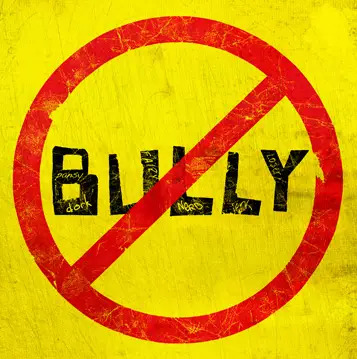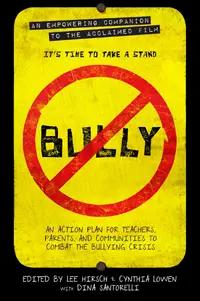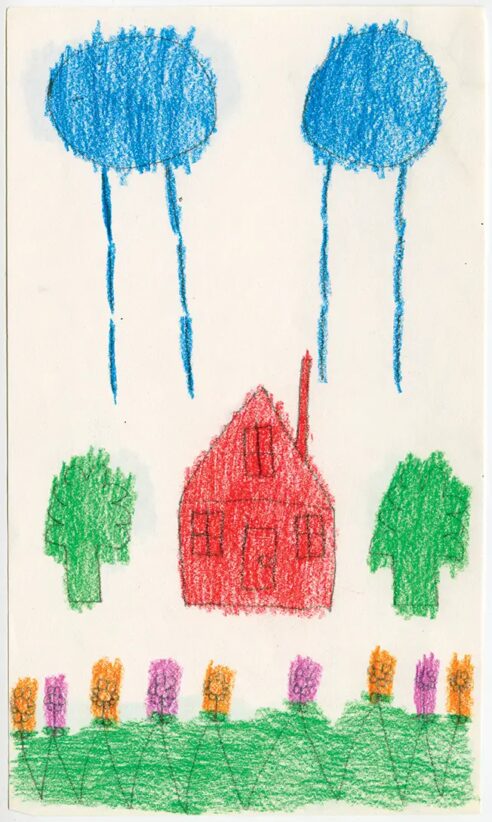Children with ASD and other special needs diagnoses are prime targets for bullying. Bully, a powerful film now out in theaters, and the book tie-in reveal compelling research and survey results.

Just as the film Bully was bringing the bullying crisis to the world’s attention, the Interactive Autism Network (IAN) launched a survey asking parents of children with autism spectrum disorders (ASDs) about their child’s bullying experiences. The survey found children with ASDs are more than three times more likely to be bullied than their siblings who do not have an ASD. What makes these children so vulnerable?
Why Kids on the Autism Spectrum Get Bullied
 ASDs are complex, involving all kinds of different issues. Individuals with an ASD may have restricted and repetitive behaviors (like hand flapping or lining up toys), sensory issues (like sensitivity to sounds, light, or textures), obsessive interests (like an all-consuming fascination with Star Wars or trains), and a tendency to inflexibility and meltdowns. They may also suffer from a number of co-occurring conditions, such as attention deficit hyperactivity disorder (ADHD) or anxiety.
ASDs are complex, involving all kinds of different issues. Individuals with an ASD may have restricted and repetitive behaviors (like hand flapping or lining up toys), sensory issues (like sensitivity to sounds, light, or textures), obsessive interests (like an all-consuming fascination with Star Wars or trains), and a tendency to inflexibility and meltdowns. They may also suffer from a number of co-occurring conditions, such as attention deficit hyperactivity disorder (ADHD) or anxiety.
At its core, however, autism is a social disability. People with ASDs have impaired “social software.” No matter what their IQ, from intellectually disabled to genius, they have a very tough time reading and responding to the social world.
What is being socially disabled like? Imagine being set down in the middle of a foreign country where you don’t know what is polite or rude, what is cool or gross, who has high or low status, and what remarks are socially appropriate or completely unacceptable. Now imagine your brain isn’t wired to know that you need to watch the people around you to figure this out. You wouldn’t be able to “do as the Romans do” because you wouldn’t get that all that social stuff is important, if you noticed it at all.
You’d be lost, stressed, and overwhelmed. You’d make a million unintentional social mistakes and misinterpret the intentions of other people. Those around you might view you as very odd. If you seemed smart because of your big vocabulary and vast knowledge of some topic like history or science, people would assume you were being intentionally rude or unreasonable when you made social blunders. Why? Because it really confuses people when someone who seems intelligent doesn’t know things about the social world most kindergarteners know. Unusual brain wiring and social blindness are, after all, invisible.
There’s something else you should know about people “on the autism spectrum.” They can be incredibly engaging, innocent, and sweet. Part of this is because they are rarely jockeying for social position. They are not trying to be the “alpha,” and they don’t care much about externals. They can seem quirky to “neurotypicals” (that is, people with so-called normal brain wiring), but they are extremely genuine. Sadly, due to their differences, they are often alone.
Maybe that is what makes them such tempting targets for bullies.
Bullying Survey Results
Nearly 1,200 families took the IAN Bullying and School Experiences of Children with ASD Survey. When we sent out notices about the survey, we asked families to take the survey whether or not their child had been bullied. That way, we would be able to compare children with ASDs who were and were not being bullied. We also asked about the children’s siblings and their bullying experiences. This gave us a way to compare children with an ASD to children who do not have an ASD.
We found that 63 percent of children with ASD had been bullied at some point in their lives. Just in the past month, 39 percent had been bullied. Only 12 percent of unaffected siblings had been bullied over the same time period, which means the rate of bullying for the children with ASD was more than three times higher. Because these numbers are based on parent-report, the actual rate is probably higher still. Just like other children, children with ASD may not tell adults when they are bullied. In the case of those who are intellectually disabled and/or nonverbal, they may not be able to do so.
We were interested in what types of bullying the children had experienced and any factors that were associated with it. We found that the types of bullying most often reported by parents choosing from a “check all that apply”–type list were “being teased, picked on, or made fun of” (73 percent); “being ignored or left out of things on purpose” (51 percent); and “being called bad names” (47 percent). Nearly 30 percent of children who had been bullied had been pushed, shoved, hit, slapped, or kicked.
Bullying occurred at every grade level, although the worst time of all appeared to be from fifth to eighth grade. Between 42 percent and 49 percent of children with ASD in those grades had been bullied in the past month. School setting was another important factor. The percentage of children with ASD currently bullied in regular public schools was 43 percent while it was 28 percent for regular private schools, 30 percent for special education public schools, and 18 percent for special education private schools. (Basically, in more protected spaces, with less contact with unaffected peers, children were bullied less.)
Children with ASD and an additional condition like ADHD, depression, or anxiety were all more likely to be bullied than children with ASD who did not have these co-occurring conditions.
There were also large variations by type of ASD diagnosis. While 28 percent of children with autism had been bullied in the past month, 61 percent of children with Asperger’s syndrome had suffered this fate. This may be because these children, who have normal-to-gifted intelligence, are most likely to be in public school settings and are also eager to engage with other children, even if they are not very good at it. Indeed, our research showed that aloof children were bullied far less than those who were trying very hard to interact socially.
A mother of a daughter with Asperger’s spoke about this on National Public Radio (NPR). She said her daughter didn’t seem to get what was going on in the minds of the children who yelled “Police, police, take her back to the insane asylum” every time she walked by. “She wouldn’t consider them off-limits to try to interact with because she just wanted friends,” the mother said. Frustrated when she couldn’t make her daughter understand she should avoid these children, she would plead, “Why are you going to hang out with kids who have been so cruel to you?”
In so many ways, children with ASD are walking around with a bullseye on their backs. Socially odd, with few friends, and little ability to understand the complex social order of any school, they are easy pickings for bullies.
The Enigma of ‘Bully-Victims’
Some of the children with ASD who had been bullied had also bullied others. Bullying researchers have noticed before that children with behavioral, emotional, or developmental issues may behave as both bully and victim. Unlike victims who are more passive, bully-victims insult their tormentors or otherwise try to fight back in a way that only makes the situation worse. They are often “disruptive and impulsive, with poor social and problem-solving skills,” according to an article in Developmental Review.
Considering the deficits in social understanding that children with ASD have, it may be that their “bullying” is different than that displayed by typical children who, according to research, generally use aggression to increase and maintain social status in the peer group. Some parents taking the IAN survey who reported their child had “bullied” noted that the motivation behind the behavior had nothing to do with becoming top dog:
- “My son doesn’t realize he is bullying. He is trying to get other kids to pay attention to him so he does it by grabbing their ball away from them or getting ‘in their face’ when they say to stop.”
- “He has very set rules of behavior that he expects all to follow. He doesn’t see how his reaction to perceived slights or rule-breaking is sometimes bullying.”
- “Our boy wants what he wants when he wants it. He may take an object from another child or scream when unhappy— but any purposeful cruelty, he would never do.”
Individuals with ASD usually do not have the social awareness to stay quiet or even lie when called for in social situations. Unfortunately, their complete honesty was viewed as bullying in some cases. (Imagine a very honest child saying, “You’re really fat,” or “I don’t like you and I don’t want to sit by you.”)
One key issue was the aggressive behaviors or meltdowns, which many children with ASD have, and which are all too easy to induce. Parents were asked if another child, who knows what bothers or upsets the child with ASD, had ever used that knowledge to trigger a meltdown or aggressive outburst on purpose. Fifty-two percent of parents said “yes.”
In some cases, bullies got the child to fall apart emotionally. “Often kids try to upset her because they find it funny when she gets upset and cries. She is overly emotional, and they seem to get a kick out of this,” one mother shared. In some cases, bullies provoked much more aggressive meltdowns, with immediate consequences for the child originally bullied.
Said one parent, “I’m so glad you asked about other children knowing how to press buttons. That has happened with my son with ASD…. Being in a class of gifted children has costs and benefits—kids are more intuitive, which means they can excuse a lot of unusual behavior, but it also means they know exactly how to elicit behaviors when they feel like it. It’s never okay for my son to hit, but what happens is kids pick at him until he pops, and oftentimes his target is the teacher! His stress builds up as the kids mess with him, then, if the teacher reprimands him, he loses control, scratching, pulling clothing and hair, and trying to bite the teacher.”
An Urgent Problem
Bullying is extremely common in the lives of children with ASD and occurs at a much higher rate for them than it does for their typically developing siblings. It is crucial that educators, providers, advocates, and families be aware of this and be prepared to intervene. Children with ASD are already vulnerable in multiple ways. To have to face teasing, taunts, ostracism, or other forms of spite may make a child who is already struggling to cope completely unable to function. If a child is anxious, or dealing with issues of self-control, or unable to focus before there is any bullying, imagine how impossible those issues must become when bullying is added to the mix.
Cruelest of all, bullying may further impair the ability of a child with ASD, who is already socially disabled, to engage with the social world. “The bully made life a complete hell for my son,” said one mother who withdrew her child with ASD from school. “He came home from school crying every day and begging to never have to go back.”
When many are advocating for “inclusion” (that is, educating children with ASDs alongside their typical peers), this is a major problem. A child will clearly not benefit from inclusion if bullying is permitted to occur.
Protecting Children on the Autism Spectrum
IAN’s research findings illustrate that children with ASD are especially at risk of being bullied. It should therefore no longer be possible for schools and other programs serving these children to behave as if each case of bullying were an isolated incident.
At the level of policy, advocates can now fight to improve the lot of children with ASD in whatever setting they are educated, especially inclusive settings. Institutions should be on the alert, working toward prevention, and with a plan to follow the instant a child with ASD is bullied. The potential damage that can occur to a child’s self-esteem, ability to connect with others, and academic achievement is crystal clear. So is the fact that progress achieved through treatments, like occupational therapy or social-skills training (most of which are delivered at school), can be undermined.
In the short term, a parent supporting a child who is being bullied in a school may want to write a letter documenting not only what bullying has occurred and its consequences but also that children with ASD need extra protection from bullying. Such a letter should go to the principal, to the people in charge of special education at the school and at the district level, and to the superintendent of schools.
Another strategy is to call an Individualized Education Program (IEP) meeting to discuss the child’s struggles because bullying is impacting his or her ability to achieve the goals outlined in the IEP document.
IEPs, as legal documents that are taken very seriously. Bringing up bullying in an IEP meeting lends the topic much more weight. It has another advantage, as well. Generally, there will be a number of school staff present, with varying degrees of authority. Instead of discussing the bullying with one administrator or teacher, who may or may not take the matter seriously, the issue is raised in a more formal setting and with multiple witnesses. It may even be possible to address the bullying, or to document that it has been a problem, in the IEP itself. The matter is far more likely to be given the consideration it deserves when this is the case.
Making a Difference
The IAN Research team is so pleased that the results of our research on bullying and children with ASDs became available at the same time The Bully Project and the Bully film brought to light the dire consequences of bullying for all children. What families were telling us about the bullying experiences of their children with ASD is now revealed as part of a widespread bullying crisis that affects children on the autism spectrum at extremely high rates, threatening to undo all the good that parents, teachers, therapists, and all those who care are trying to do to support these children. There is now solid evidence that these children need special protection and real hope that they will receive it.
Connie Anderson, Ph.D., has a son on the autism spectrum and is the community scientific liaison for the Interactive Autism Network (IAN), an innovative online project of the Kennedy Krieger Institute that is supported by Autism Speaks, the Simons Foundation, and the National Institute of Mental Health. It brings together tens of thousands of people affected by autism spectrum disorders (ASD) and hundreds of researchers in a search for answers.
Reprinted with permission of the publisher from Bully: An Action Plan for Teachers, Parents, and Communities to Combat the Bullying Crisis (Weinstein Books; October 2012; $15.99, bn.com).


















